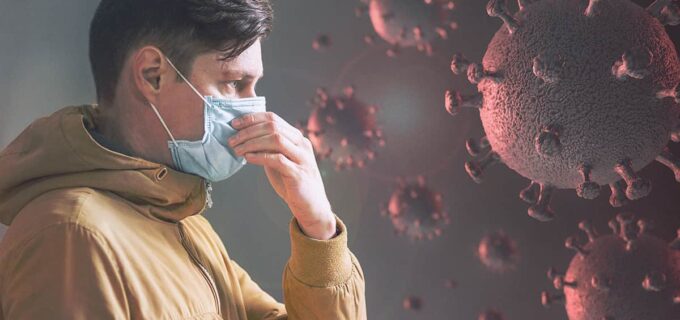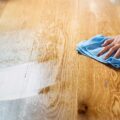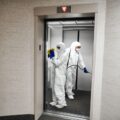For all Singaporean property managers and business operators alike, being informed that a positive Covid-19 case has passed through your building or commercial is absolutely not a ‘for your information only’ event. Because, unfortunately, the tangible risk of infection is not transient and does not leave again with the infected person in question. A person that is unknowingly positive with the Covid-19 virus will inevitably leave a residual trail of potentially infectious material behind them wherever they go, hence the need for an extended period of mandatory quarantine or compliance with a ‘Stay at Home Notice’ to prevent this happening. Otherwise, a Covid-positive individual will continue to leave an invisible trail of highly contagious genetic material in their path that will still pose a tangible risk of cross-infection for hours or even days after the infectious person in question has been and long-gone!
This residual trail of contagious material in the areas that the infectious individual has passed through will pose a tangible risk of infection to others in two distinct ways:
Primary Risk of Cross Infection via Airborne Transmission
After several months of coping with a Covid-19 pandemic, the scientific research gathered during this period now clearly demonstrates that one of the most likely ways the virus will be passed from one person to another is via airborne transmission.
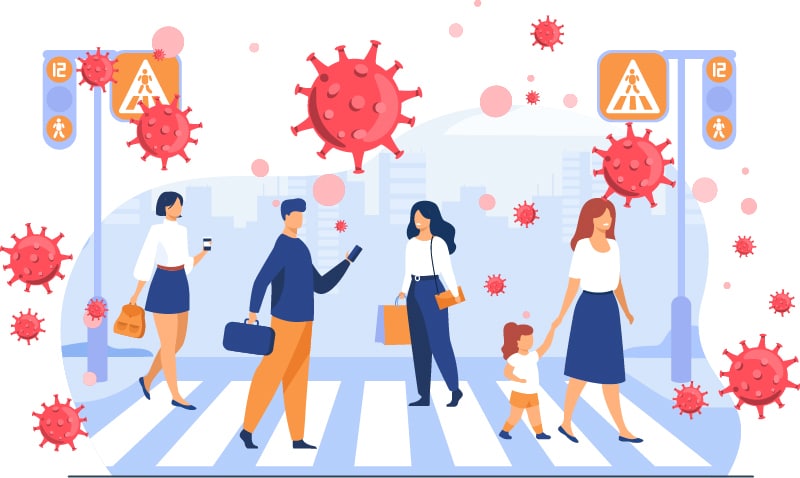
When people (not wearing a mask) talk, shout, sing, cough, or sneeze they will inevitably launch huge numbers of airborne aqueous droplets from their respiratory tracts into the air. Some of these droplets will be quite large and visible to the naked eye, whilst many, many more will be microscopic in size. Irrespective of the size of the droplet, each and everyone coming from a Covid-19 positive person’s respiratory tract will be carrying millions of potentially infectious viral particles.
At this juncture, one of two things will happen, the larger droplets along with their viral load will settle due to gravity and deposit the infectious viral material being transported onto objects or surfaces in the vicinity, immediately rendering them contagious. However, the smaller microscopic droplets will likely dry in the air leaving their infinitesimally small viral cargo suspended in the air. These viral particles have now been proven to remain suspended within indoor air currents for hours and in some cases even days. During their period of airborne suspension, these viral particles are easily respirable and therefore highly contagious for anyone else passing through the area even hours or days after the Covid-19 positive person has departed.
However, the risk of contagion does not remain solely in the air, because over a period of time, due to gravity, even the smallest viral particles will settle downwards until they are deposited onto objects and surfaces, once again ready to infect any unsuspecting passer-by that subsequently touches it. Here is how antimicrobial surface coatings can eliminate the risks of cross-contamination.

Secondary Risk of Cross Infection via Contaminated Surfaces and Objects
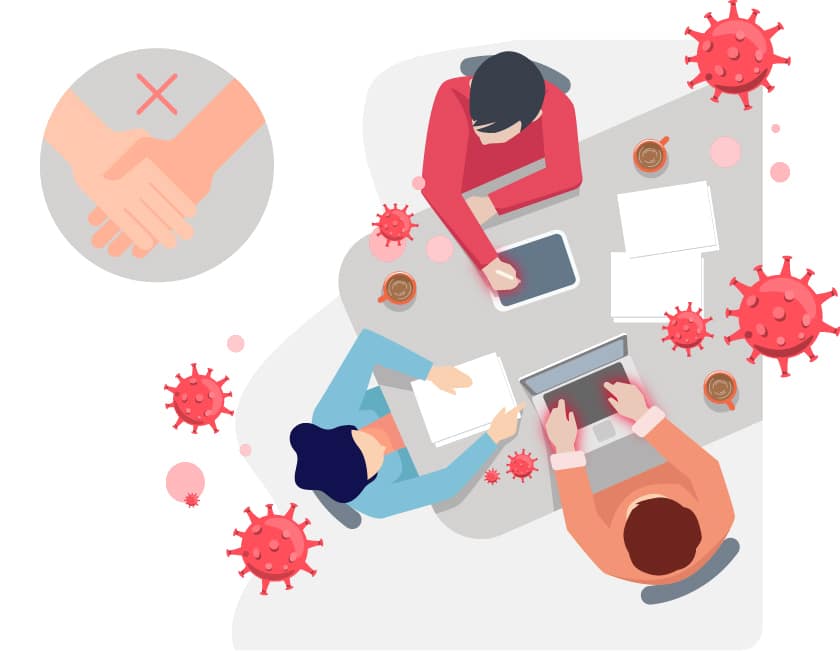
Based on the information on airborne transmission above, we now know that there are two ways for surfaces and objects to become contaminated with the Covid-19 virus and therefore become a potential risk for the indirect transmission of the virus from one person to another. The two ways surfaces can become potentially contagious are:
- By direct contamination from a person that is Covid-19 positive and shedding the virus to physically touch a surface and deposit viable and infectious viral material directly onto the surface in question
- By indirect contamination following the deposition of previously airborne viral particles onto surfaces and objects as they fall from the air due to gravity
Irrespective of how contamination occurs, the scientific evidence now indicates that the Covid-19 virus can remain viable and therefore infectious on various surfaces and objects for different lengths of time depending upon ambient temperature and relative humidity as well as the physical nature of the fabric or material of the surface itself.
Independent studies have shown that the Covid-19 virus can remain infectious on stainless steel and plastic surfaces for up to 72 hours yet only 4 hours on paper and cardboard. Therefore, with a mixture of surface types in any physical environment, comes a variety of risk levels from cross-infection via contaminated surfaces and objects. However, the virus that causes Covid-19 can be destroyed and eliminated by thorough routine cleaning, sanitising and disinfection.
Routine Preventive Cleaning and Disinfection
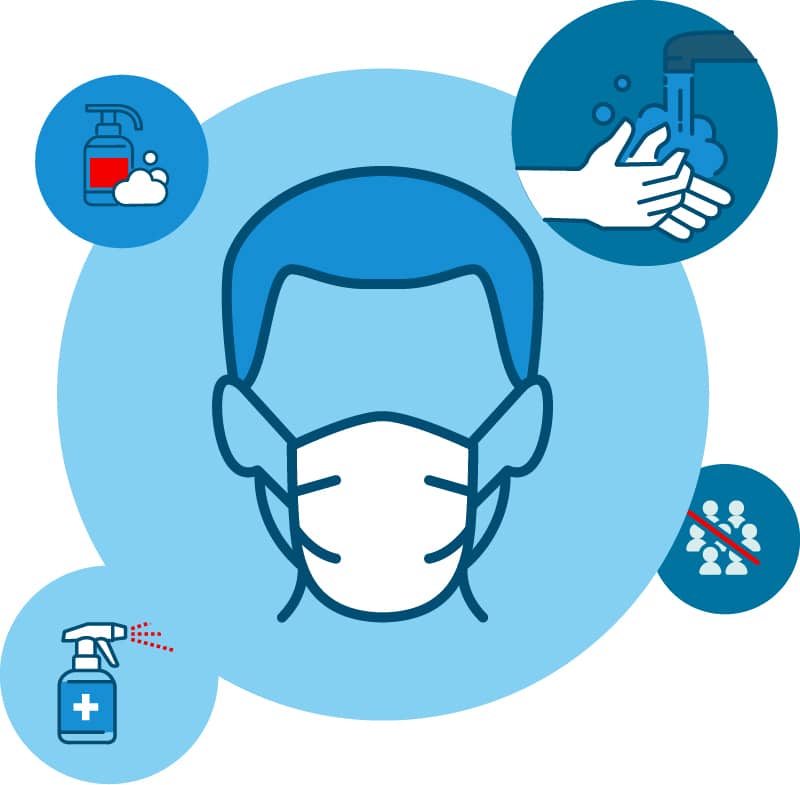
As good citizens, we all have a civic responsibility to help combat the spread of the Covid-19 virus within our communities by undertaking relatively simple routine preventive measures, with which we have all become familiar with over the last few months.
Basically, as a precautionary measure, all surfaces that will be touched regularly by large numbers of people should be thoroughly cleaned and sanitized on a regular basis. Of course, priority should be given to all ‘high touch’ surfaces such as door handles, push plates and bars, service countertops, tables and chairs, ATM machines, and card payment terminals including touch screens. Additionally, all shared facilities such as changing rooms, restrooms, toilets, sinks, and taps must all be regularly cleaned, sanitized and then as recommended by Singapore’s National Environment Agency (NEA) treated with a disinfectant spray.
However, as we have seen above, it is now clear that as quickly as we clean and sanitize surfaces, they could become contaminated again almost immediately afterward either by direct contamination by being touched or indirectly from airborne contamination by a Covid-19 positive individual that is actively shedding the virus into to their surroundings. Therefore, in addition to regular cleaning, sanitizing, and disinfection of all surfaces and objects to mitigate this risk, it would be wise to consider the additional surface protection and peace of mind that can be obtained from using a long term anti-microbial surface disinfectant.
As this is a somewhat specialised operation it might be best to consult with a Singapore based professional cleaning and disinfection company. The easiest way of locating the best professional cleaning and disinfection services on offer in Singapore.
Actions to Take When a Covid-19 Individual is Identified
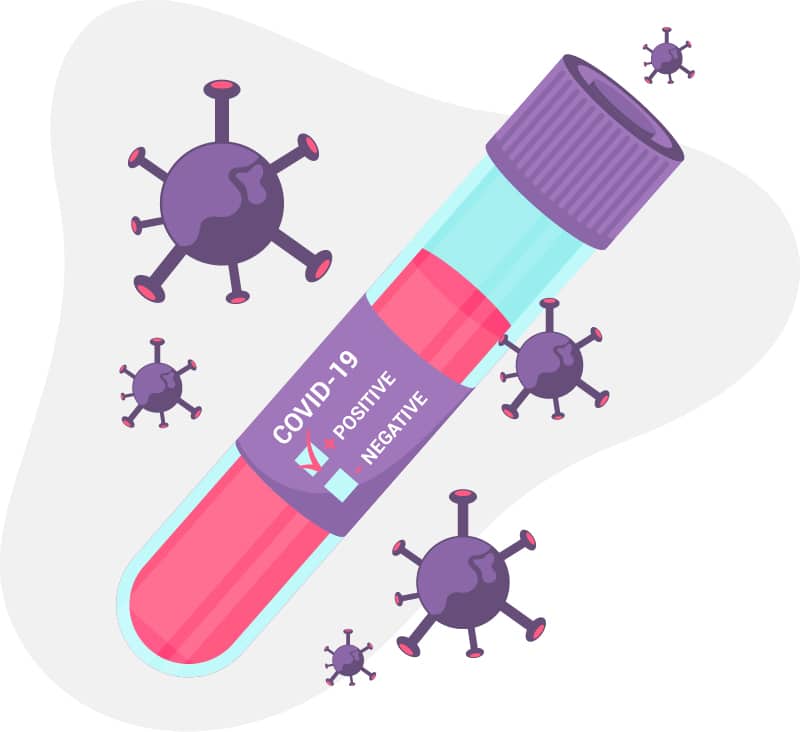
As we have learned earlier, we are now going to describe what actions should be taken in the unlikely event that a positive Covid-19 individual has been identified via Singapore’s ‘Track and Trace’ programme to have been physically present within a particular property or commercial outlet.
It makes no difference whether a contagious individual actively shedding Covid-19 viral material has been present within a property for an extended period of time or has just transiently passed through, the potential risks of cross-contamination and re-infection remain the same, and therefore, these risks need to be mitigated with the same degree of vigilance.
Once again, following consultation with two cleaning companies offering the best and most professional disinfection services in Singapore, we will now provide some detailed technical guidance on what needs to be accomplished immediately upon discovery that the highest level of Covid-19 exposure has occurred within a property or business under your control.
Immediate Actions to Take
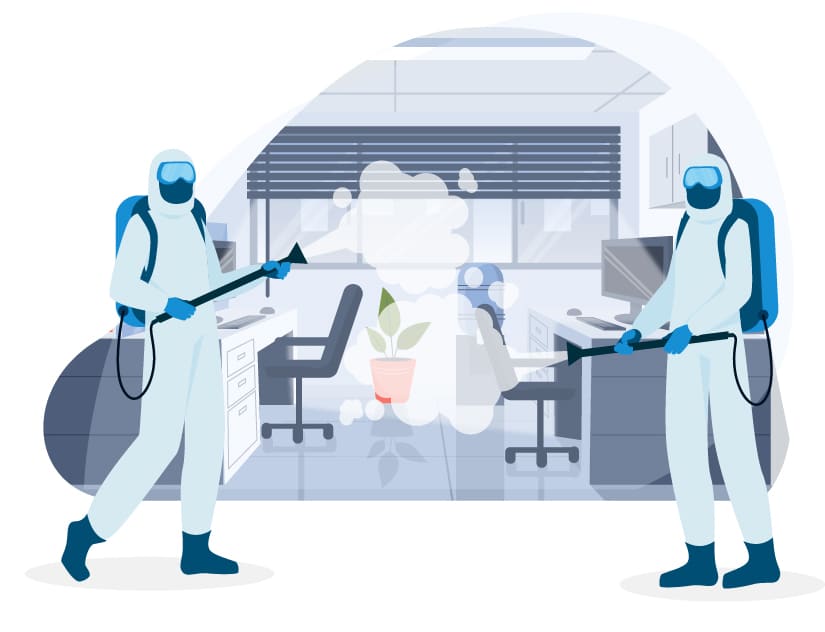
The first things you should do on learning your property or business is a probable Covid-19 transmission risk are as follows:
- Immediately restrict access to the areas in question even if this means a temporary closure or significant reduction in operations.
- If they do not already know, immediately contact Singapore’s National Environment Agency (NEA) and report the situation to them with all the dates, times and contact details you already have available. It is likely they will also require details of all your employees and contractor staff for further tracing, testing and quarantine.
- Consult with a professional cleaning and disinfection company in Singapore and seek their help and advice as required to immediately undertake the infection control and decontamination procedures necessary to stem the spread of the disease further within the community.
Learn and Follow these General Principles of Hygiene and Infection Control
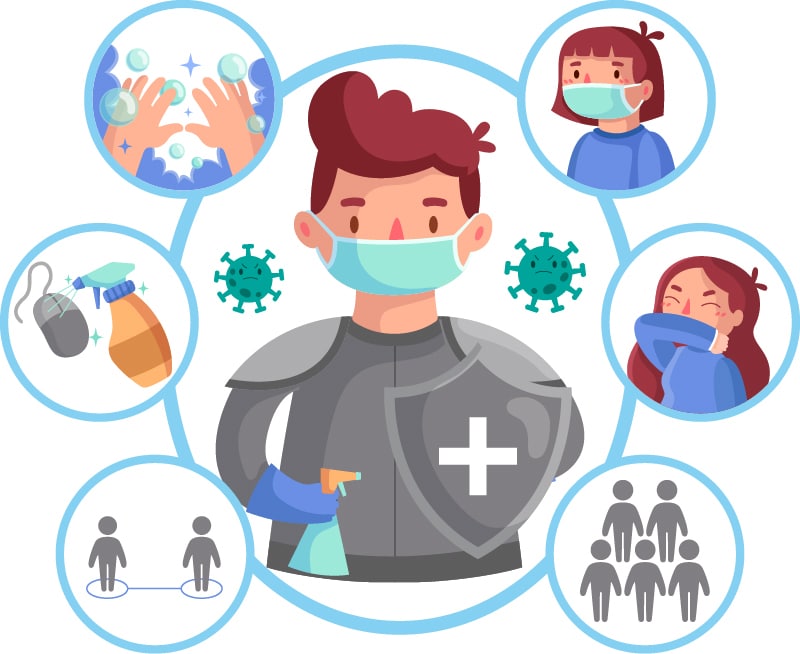
Once the urgent tasks have been completed, it is then imperative to begin the Covid-19 post-exposure cleaning, disinfection and decontamination procedures in accordance with NEA guidelines and the technical recommendations provided by your chosen cleaning and disinfection company. However, as a general rule, you should carefully observe the following basic principles of infection control without deviation:
- Always practice hand hygiene techniques regularly and thoroughly to minimise the increased risk of infectious viral material to yourself, other people and the possible contamination or re-contamination of high touch surfaces.
- Perform thorough hand washing regularly with anti-microbial soap and hot water for a minimum of seconds and then dry them carefully with disposable towels or and hot air dryer.
- In the absence of soap and hot water and only when your hands are not visibly soiled, you may substitute hand washing with the appropriate use of an approved hand sanitiser. Make sure you carefully sanitise all parts of your hands and then rub them together until dry.
- Avoid hand contact with your face and all mucous membranes such as the mouth, nose or eyes without handwashing or hand sanitising first to reduce the risk of cross-infection from contaminated objects and surfaces.
- When cleaning, sanitising or disinfecting any potentially contaminated surface always wear a suitable (Singapore NEA) approved facemask and disposable gloves. When the task is completed or as deemed appropriate (the more often the better) place the used gloves and mask into a designated waste-bin and once again wash or sanitise your hands thoroughly.
- If the cleaning task being undertaken poses a risk of splashing, then you should wear a disposable face shield and apron in addition the mask and gloves.
- Remain diligent and vigilant at all times.
Selecting the Appropriate Cleaning Chemical and Sanitising Agents

Before cleaning, sanitation and disinfection can begin to effectively decontaminate the areas concerned, first, we must select the appropriately approved chemicals. Once again, to guide us through this technical section we have taken professional advice from the experts working within the longest standing and most experienced cleaning and disinfection company in Singapore.
The Covid-19 can remain viable and infectious on surfaces for several hours and in some cases where conditions are optimal, however, the virus can be destroyed by effective cleaning, sanitising and disinfection, provided the following selection guidelines are closely followed in the event of a confirmed case of Covid-19.
- For cleaning and sanitation purposes any hospital-grade detergent or sanitising agent will suffice provided it used in strict accordance with the instructions on the label which will also include the necessary safety precautions recommended for safe use.
- In particular, pay strict attention to dilution rates, water temperatures and dwell time (the latter being the length of time the product should remain in wet contact with the surface before being removed and the surface allowed to dry).
- It must always be remembered that the efficacy of the cleaning, sanitation and subsequent disinfection is closely linked to being well prepared and following all the product instructions to the letter.
What to do before Cleaning, Sanitising & Disinfection Works
Here are the immediate preparatory steps that need to be completed before undertaking the cleaning, sanitising and disinfection work necessary to safely decontaminate all the areas in question and return them to a safe and useable condition.
Gather Together All Equipment and Materials
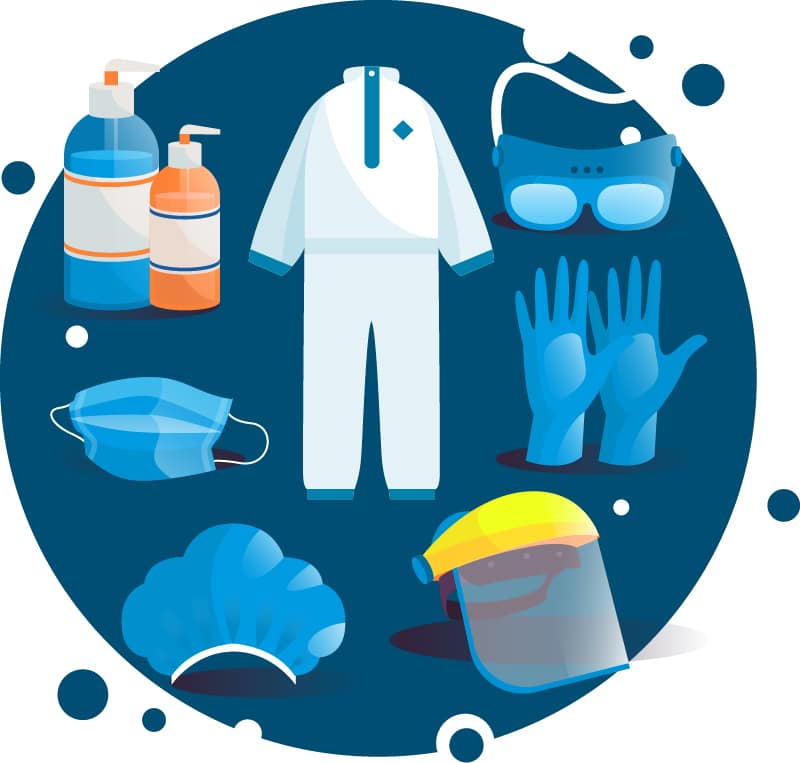
Before entering the areas to be cleaned and disinfected, it is essential that all the necessary materials required to undertake the cleaning and disinfection process are gathered together including:
- All personal protective equipment (PPE)
- All cleaning, sanitising and disinfection fluids
- All cleaning equipment and disposables
- All colour coded waste bags and containers for segregating items to be destroyed and disposed of and those to safely hold items that need to be cleaned and disinfected outside or offsite
Donning Personal Protective Equipment (PPE)
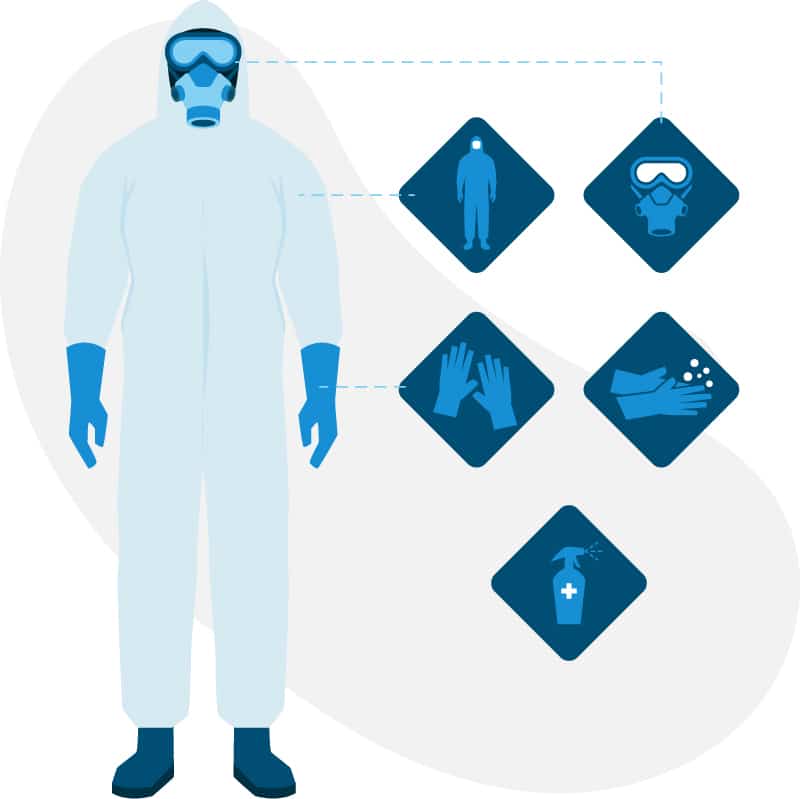
- Undertake thorough handwashing and or sanitising
- Put on gown, disposable ‘tyvec’ oversuit and apron
- Put on mask and protective eyewear or face shield
- Put on disposable gloves
Undertake a Thorough, Methodical Cleaning and Decontamination Process
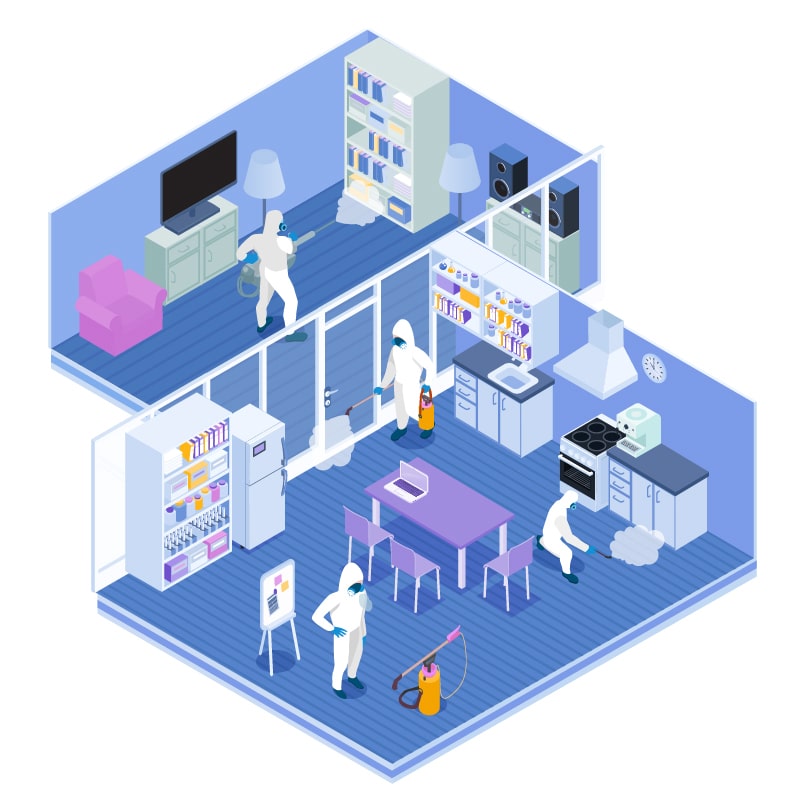
The next step in the process is to actually begin the thorough, methodical cleaning, sanitation and disinfection of all the affected and potentially affected areas. There are two basic yet overarching principles that must be adhered to when cleaning and sanitising in preparation for the widespread application an authorised disinfectant spray that is capable of destroying the virus in situ, and thereby rendering the area safe for occupation and use again.
First, always commence clearing, preparation, cleaning and sanitation using a ‘top to bottom’ approach. By starting higher and working downwards towards the floor ensures that any potentially contaminated residues or debris will find its way to the floor and will be eliminated last when the floor is appropriately mopped, cleaned and then disinfected.
Second, in addition to working from ‘top to bottom’ a progression from ‘clean to dirty’ areas should always be adopted. By starting with cleaning objects and surfaces that are already the cleanest and moving towards areas that are dirtier further reduces the risk of cross-contamination.
Whilst always keeping these two guiding principles in mind, proceed with the stripping and preparation of the room as follows:
- Remove all fabrics and linens (including curtains, cushion covers, bedding, towels, rugs and mats) that are either going to be laundered ‘in-house’ or going to an external facility for cleaning. Once all the fabrics and linens have been bagged, spray the exterior of the bag with a disinfectant or bleach solution before ‘double-bagging’ the items and removing them to the outside. The exterior of the second bag should also be sprayed with disinfection before it leaves the dirty or contaminated area.
- If the fabrics and linens are going to be sent ‘outside’ for commercial cleaning and decontamination, then follow the procedures set by the contracting company in question for receiving soiled, contaminated and potentially infectious materials.
- If the fabrics and linens are going to be washed and laundered ‘in-house’ the follow the appropriate infection control guidelines for laundering soiled, contaminated and potentially infectious fabrics and wash on the highest temperature recommended on the label of the fabric. Following laundering, all items should be dried thoroughly before being returned to normal use.
- All easily removable crockery, cutlery and utensils should either be ‘double-bagged’ as described above or placed within a sealed container for transport to a dishwashing facility before being placed on a ‘hot wash’ cycle.
- Clean all electrical appliances in accordance with the manufacturer’s instructions for cleaning.
- Clean all large appliances inside and out again following the manufacturer’s instructions.
- Thoroughly and meticulously clean and sanitise all ‘high touch’ surfaces such as door handles, door push plates and bars, window catches, light switches, table and counter tops and chairs.
- Then using a fresh set of cleaning equipment (appropriately colour coded) progress to cleaning and sanitising all toilet fixtures and fittings. The cleaning and sanitising of toilets and bidets should always be performed last.
- Remove and discard all disposable PPE including gloves and mask into the appropriate rubbish bag.
- Wash and dry hands thoroughly before applying a fresh set of disposable PPE.
- Use a HEPA filtered vacuum to clean all debris and loose soil from carpets and fixed fabric surfaces. Where appropriate, this can then be followed by steam cleaning.
- Clean (dry mop, vacuum and wet mop as appropriate) all non-porous floor surfaces and then sanitise using an appropriate floor detergent/disinfectant.
- On completion of the cleaning and decontamination process the area may be vacated following the proper removal of all PPE.
Removing Personal Protective Equipment (PPE)
Follow the correct sequence for donning PPE as follows:
- Remove disposable gloves
- Perform hand sanitising routine
- Remove disposable suit and/or gown
- Perform hand sanitising routine
- Remove all protective eyewear
- Perform hand sanitising routine
- Remove mask
- Perform hand sanitising routine
After removing all PPE (which will be also be potentially contaminated and infectious) place it in sealed bags either for disposal as infectious waste or in the same way as other soiled and potentially infectious laundry. Once all the items have been appropriately bagged and sealed, once again, perform hand sanitising routine.

Disinfect Entire Area to Eradicate the Covid-19 Virus
If your building, business or facility has been confirmed as a significant cross-infection risk due to the presence (transient or otherwise) of a Covid-19 positive individual shedding viral particles (either directly from touching objects or surfaces or indirectly from the deposition of contaminated airborne droplets) then your property will have certainly been contaminated with infectious viral particles. In this scenario, following the cleaning and decontamination procedure described above, you are probably best advised to utilise the services of a Singapore based cleaning and disinfection services contractor to treat the area with an appropriate professional grade disinfectant spray.
By far the most effective disinfection process on the market in Singapore involves the application of a nebulised Ultra Low Volume (ULV) spray of Hydrogen Peroxide solution that has been ionised using a cold plasma arc. This type of disinfection is guaranteed to kill 99.9999% of all known pathogenic organisms and will render every surface, object and nook and cranny effectively sterile. There are very few cleaning and disinfection companies in Singapore that are qualified and experienced to undertake this work, so selecting the best contractor available is a prerequisite.

Antimicrobial Surface Protection Treatment to Prevent Future Re-contamination
As discussed earlier, no matter how quickly and how efficiently we clean and sanitise surfaces, they can become contaminated again almost immediately afterwards by being touched or from airborne contamination from a Covid-19 positive person.
Therefore, it would be very sensible to consider the additional surface protection and peace of mind that can be obtained from using a long term anti-microbial surface disinfectant. Once again, this is a somewhat specialised operation and is best discussed with your chosen Singapore based professional cleaning and disinfection company.
Related Posts
- How Covid-19 Spreads and How to Prevent It
- Surface Hygiene for Office and Commercial Premises
- Singapore’s Leading Waste Management Company Deploys Antimicrobial Preventive Measure to Protect Staff & Assets
